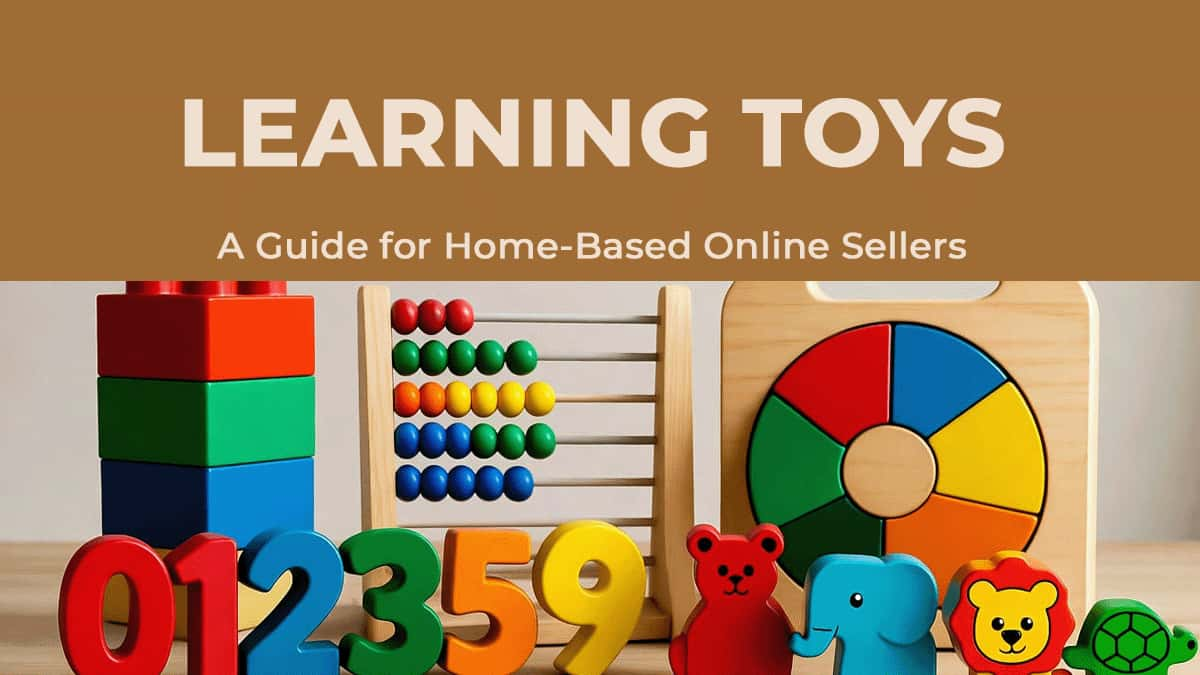Learning toys have evolved far beyond alphabet blocks and flashcards. In 2025, parents, educators, and even adults are turning to interactive, skill-building products that make education fun and engaging. Available through verified wholesalers on WorldwideBrands.com, which connects sellers to over 17 million certified wholesale products, learning toys offer a unique balance between entertainment and real educational value.
For home-based sellers, these products are a goldmine. They appeal to an audience that values development and creativity, not just playtime. From STEM kits and sensory games to language-building puzzles, they fit into an evergreen category that thrives on repeat sales and trusted recommendations.
Market Snapshot: The Rise of Learning Toys
The global market for learning toys is booming, projected to exceed $80 billion in 2025, growing steadily as parents seek alternatives to screen-heavy activities. Search volume for the focus keyword learning toys consistently averages around 18,000 global monthly searches, indicating strong ongoing demand.
Major retailers like Amazon, Walmart, and educational platforms such as Lakeshore Learning continue to expand their offerings, but small, specialized sellers are carving out profitable niches by focusing on eco-friendly materials, inclusivity, and specific age-based learning goals.
What’s fueling this growth? A post-pandemic shift toward at-home learning, homeschooling trends, and the push for “learning through play.” This market isn’t a passing trend; it’s a cultural shift in how families think about education.
Target Demographic: Who’s Buying the Learning Toys?
The primary buyers for learning toys are parents aged 25 to 45 with children under 10. These consumers are active on social media platforms like Facebook and Instagram, often following parenting influencers, homeschool accounts, or early education experts. They tend to shop on Amazon and Etsy for convenience but are also drawn to independent ecommerce sites that emphasize product safety, educational value, and brand authenticity.
The secondary audience includes educators and therapists who use these toys for developmental work in classrooms and clinics. These buyers value product durability, consistent supply, and trusted suppliers. Sellers targeting both groups can build loyalty by emphasizing educational outcomes, certifications like ASTM or CE, and clear age-appropriate guidance in listings.
Demand and Competition Analysis for Learning Toys
Demand for learning toys is steady year-round with seasonal spikes during holidays and back-to-school periods. Google Trends data shows consistent search growth since 2023, with no major dips, which proves that this category holds long-term potential.
Competition, however, is intense. Amazon’s marketplace is saturated with mass-produced items and counterfeit imports. Sellers there face high fees and constant pricing wars. On eBay, demand exists among collectors and educators, but margins are slim after platform costs.
Home-based sellers who run independent websites have the edge. With control over branding, pricing, and presentation, they can market directly to buyers who care about educational results rather than chasing the lowest price. Adding trust-building factors such as sourcing from verified wholesalers on WorldwideBrands.com helps stand out from generic competition.
Profit Margin Potential of the Learning Toys
Wholesale prices for quality learning toys typically range from $6 to $25, depending on materials, size, and complexity. Retail prices usually fall between $20 and $60, depending on branding and packaging. On Amazon, a learning toy bought wholesale at $15 and sold for $45 provides a 66 percent gross margin before fees. After factoring in platform costs, sellers often net around 30 percent.
By contrast, independent ecommerce sellers can achieve net margins of 45 to 55 percent, especially when bundling products such as combining puzzles with flashcards or sensory tools. Repeat purchases from loyal parents also drive higher lifetime customer value. Emphasizing safety certifications, educational credibility, and eco-friendly materials supports premium pricing.
Year-Round Drawback of Selling Learning Toys
The biggest challenge for learning toys is saturation during Q4, when large retailers dominate paid advertising and shipping logistics. Sales can drop by 15 to 20 percent in early spring as holiday budgets tighten.
Sellers can balance this by promoting non-seasonal categories such as developmental toys for special needs, early learning kits for preschoolers, or travel-sized educational games. Positioning learning toys as birthday gifts or homeschool tools helps maintain steady sales across all seasons. Offering bundles and subscription-style kits also smooths out dips while increasing repeat revenue.
Viability Verdict and Actionable Advice for Learning Toys
Learning toys remain one of the most promising evergreen niches for home-based online sellers. The market continues to expand, driven by a growing focus on experiential learning and child development. With strong demand, moderate profit margins, and a loyal customer base, this category offers stability and room for creativity.
Actionable Advice:
Analyze the best-selling listings on Amazon and Etsy to see how successful sellers photograph and describe products.
Build a niche store around specific learning outcomes, such as STEM skills or Montessori-style education.
Use social media to reach parent communities and collaborate with small educational influencers.
Source inventory exclusively from WorldwideBrands.com to guarantee authenticity and supplier reliability.
Offer bundles and consistent branding to create a recognizable and trustworthy presence that encourages repeat buyers. When approached strategically, learning toys can become the cornerstone of a profitable, sustainable home-based ecommerce business that balances purpose and profit.

